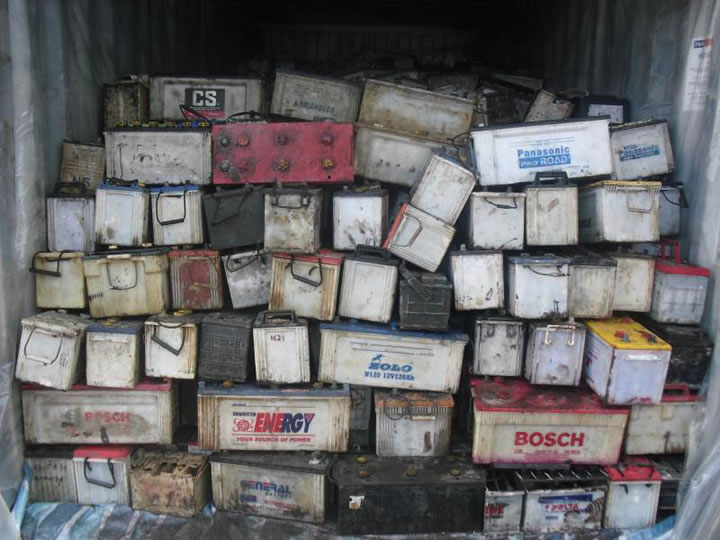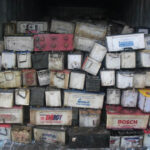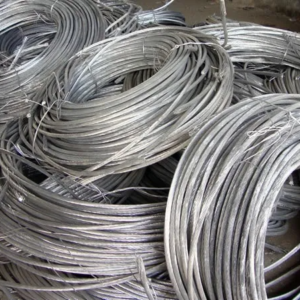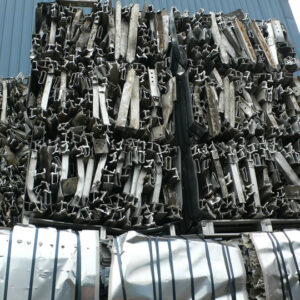Spent Lead-Acid Battery Scrap / Depleted Whole Batteries (Often referred to as “Rains”)
Lead-Acid Battery Scrap.
Waste Batteries: Drained Lead Acid Battery Scrap, often termed as “Rains,” primarily encompasses lead-acid batteries. These batteries are composed of plates, lead, lead oxide, and an electrolyte solution comprising 35% sulfuric acid and 65% water. Notably, lead-acid batteries account for nearly 60% of global battery sales. Lead-Acid Battery Scrap
Classification: Lead-acid storage batteries can generally be categorized into two types based on their construction: Flooded or Sealed. Flooded (or wet) lead-acid batteries have their electrodes and plates immersed in electrolyte, whereas Sealed Lead-acid or valve-regulated Lead acid (VRLA) batteries immobilize the electrolyte. All lead-acid batteries undergo a process called electrolysis during charging, leading to the production of hydrogen and oxygen gas (gassing) at the electrodes. Lead-Acid Battery Scrap
Lead Acid Battery Waste Recycling: The grid structure in both batteries is made from a Lead alloy. A pure Lead grid structure is not strong enough; therefore, other metals like antimony, calcium, tin, and selenium in small quantities are alloyed for added strength and improved electrical properties.
The electrolyte in a Lead-acid battery is a dilute solution of sulfuric acid (H2SO4). The negative electrode of a fully charged battery is composed of sponge Lead (Pb) and the positive electrode is composed of Lead dioxide (PbO). The separator is used to electrically isolate the positive and negative electrodes.
Waste Batteries: The typical Lead-acid battery comprises of: metal grids, electrode paste, Sulphuric acid, connectors and poles of Lead alloy, and grid separators made up of PVC. The battery components are contained in corrosion and heat-resistant housing usually composed of plastic (polycarbonate, polypropylene, or polystyrene).
- Lead (alloy) components (grid, poles, …): 25 – 30%
- Electrode paste (fine particles of Lead oxide and Lead sulphate): 35 – 45%
- Sulphuric acid (10 – 20 % H2SO4): 10 – 15%
- Polypropylene: 5 – 8%
- Other plastics (PVC, PE, etc.): 4 – 7%
- Ebonite: 1 – 3%
- Others materials (glass, …): < 0.5%
Table: Composition of Typical Lead-Acid Battery Scrap
In the past, grids were mainly made from antimony-Lead alloys, but new trends show an increase in the usage of calcium-Lead alloys. The electrode paste of used batteries is a mixture of Lead sulphate and Lead oxide. The composition of typical battery scrap material is given in the Table. Lead-Acid Battery Scrap
Drained Lead Acid Battery Scrap: Drained Lead Acid Battery Scrap shall consist of whole drained lead/acid batteries. It may contain plastic or rubber cases, but it may not contain wooden, metal, or glass cases. This is often referred to as ISRI code RAINS.
This type of raw material is highly preferred by Lead recyclers/smelters or recycling/smelting industries. They provide Rotary-based smelting plants for processing such raw material with equipment and machines for handling and separation of Lead.

 Location
Location Select Categories
Select Categories





Reviews
There are no reviews yet